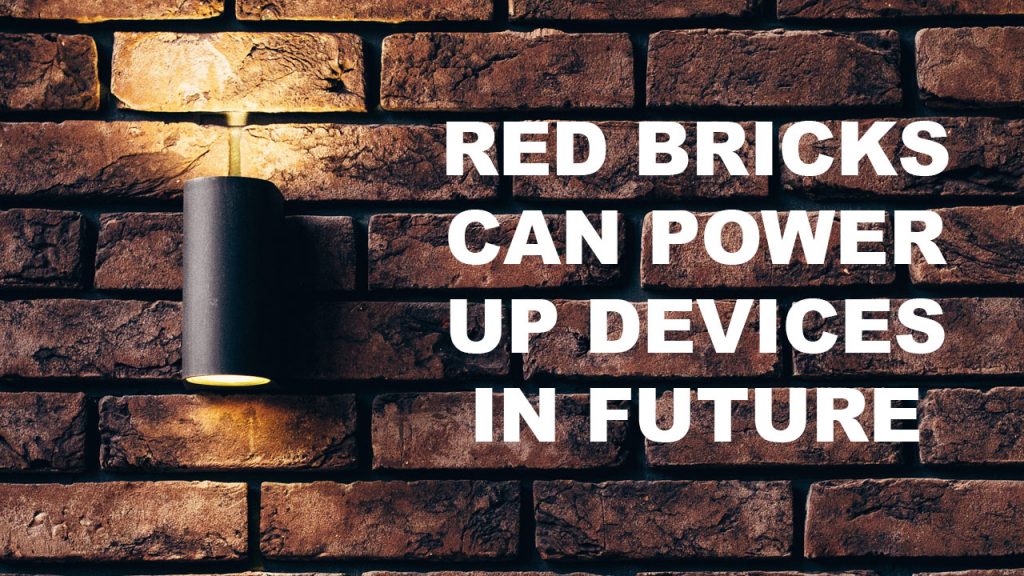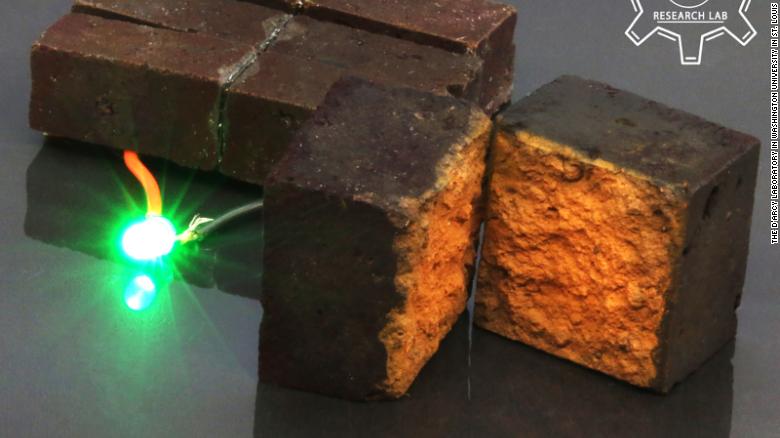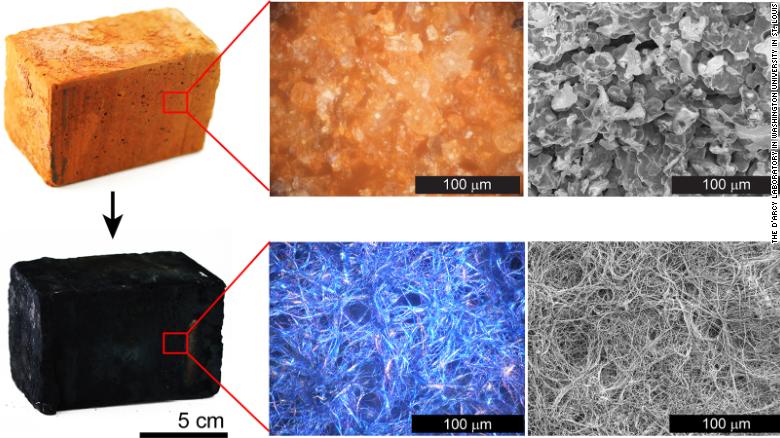
This is right just a countable amount of bricks may now able to power up your regular electricity needs as scientists said.
Red bricks, which are among the world’s cheapest and most extensively used building materials, may be turned into energy storage units that can be charged to store electricity like a battery, according to a new study.

Red bricks are one of the most preferred very durable building materials, having been used for over 6,000 years in construction. The term brick was originally used to describe a dry clay block. As bricks are mostly used in walls and are frequently mortared together they perform best becoming satisfying weather resistance material. Furthermore, they have a tendency to absorb heat during the day and release it at night, which is good for maintaining temperature conditions in a building.
Bricks have been a favorite of builders for thousands of years, whether they were creating Neolithic houses, ranch-style homes, or modern Mansions. Chemists have just identified a new possibility in these common building blocks: Scientists have demonstrated that ordinary bricks may be turned into energy storage devices capable of turning on LED lights through a sequence of reactions.
While experts warn that much more research is needed before these “smart bricks” can be sold commercially, they say the proof of concept shows promise and might one day transform a home’s walls into a battery to store renewable energy.
“What we’ve shown in our research is enough to light up emergency lighting in a corridor or sensors that might be installed inside the walls of a house,” said Julio M. D’Arcy, an assistant professor of chemistry at Washington University in St. Louis, Missouri, and one of the study’s authors.
“The next is to try to store more energy so that larger gadgets, such as a laptop, maybe powered straight from the house’s walls.”
Architects have long admired bricks for their aesthetic appeal and ability to retain heat, but D’Arcy claims that using them to store electricity has never been attempted.
The researchers stated they took advantage of bricks’ intrinsic structure to unlock their energy storage capacity.
“We take advantage of what bricks have to offer,” D’Arcy said, “which is a porous network and a really sturdy material.”
Research

Julio D’Arcy and his colleagues at Washington University in St. Louis, Missouri, employed a special conductive polymer called PEDOT. They started by heating standard red bricks that are commonly used in house construction with acid vapors. The haematite in the bricks, the mineral that gives them their red color, was dissolved as a result of this. Other chemicals were subsequently added, which reacted with the dissolved haematite. The end result was a network of small, conductive PEDOT fibers embedded in bricks. Instead of being red, the bricks are now a dark brownish-blue color.
The researchers blasted a series of gases through the network of pores inside the brick to modify it to store electricity. According to the scientist’s team, the gases react with the chemical components of the bricks, coating them with PEDOT, which is an excellent conductor of electricity.
The porous structure of bricks allows for easy storage. The acid vapor fills those pores, acting as a solvent for the iron oxide (or rust) that bricks are made of. When gas is transferred through the cavities of bricks which are filled with a sulfur-based material that reacts with iron. As a result, a conductive plastic, polymer PEDOT, surrounds the bricks’ porous. PEDOT, which is comprised of nanofibers that penetrate the inner porous network of brick; a polymer coating remains trapped in a brick and serves as an ion sponge that stores and conducts electricity. The technique changed the color of the bricks from red to a dark blue tone.
Despite their resemblance to batteries, D’Arcy claims his team’s “smart bricks” are technically supercapacitors, which vary from batteries in several respects.
Supercapacitors, while capable of storing massive amounts of energy, are unable to maintain that charge or give consistent energy over long periods of time, as batteries can.
“A battery will provide you with enough energy density to drive 300 miles, but a supercapacitor will allow you to accelerate very quickly at a red light,” D’Arcy explained.
Better Possibilities as a green energy alternative
Scientists believe the bricks have potential as a green energy alternative.
Solar power continues to grow rapidly as an inexpensive and clean energy source, whether it’s enormous “farms” of solar panels or home rooftop installations. However, one of the issues is storing solar energy while the sun isn’t shining.
These “smart bricks” are now unable to compete with the energy storage capacity of lithium-ion batteries, which are utilized in many solar power systems. However, there is hope that this new technology can be used to produce a new storage system that uses widely available materials.
The proposed technology, according to the research team, has the potential to create significant volumes of renewable energy. Researchers calculated that charging 50 capacitor bricks would take 13 minutes and produce enough energy to operate a building’s emergency lighting for at least 50 minutes.
D’Arcy claimed that the brick capacitors can be recharged numerous times in a short amount of time without any defects, among other benefits.
Iron oxide, a waste product, has been transformed into a usable product that can be used in the production of renewable energy, according to researchers. “Inert materials have the potential to revolutionize chemical manufacture,” the researchers concluded.
The team’s long-term goals are to enhance energy storage capacity by at least tenfold while lowering the cost and time required to manufacture polymer-coated bricks.